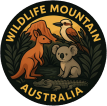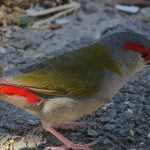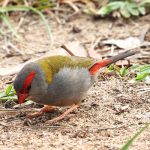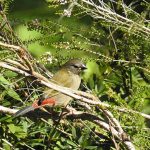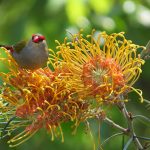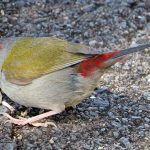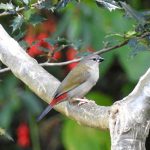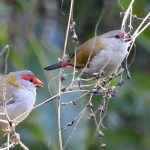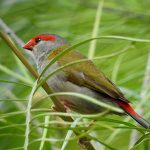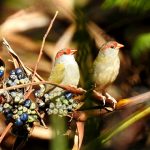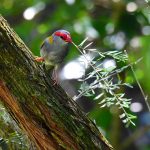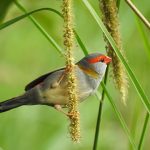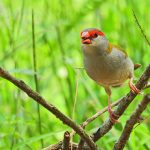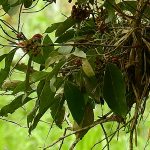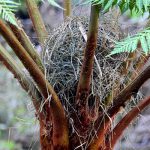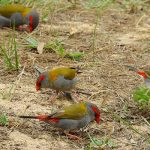RED-BROWED FINCH
Quiet Jewels of the East
In the gentle hush of early morning, when the sky blushes softly over Australia’s eastern grasslands and open woodlands, a small, lively bird flits among dew-studded grasses—the Red-browed Finch. Easily overlooked due to its size but never its brilliance, this bird offers a glimpse into the resilience and beauty of Australia’s native wildlife.
A Dash of Colour in the Green
Imagine a canvas of olive-green, lightly brushed with delicate touches of crimson. The adult Red-browed Finch:
- Measures just 10–11 cm from beak to tail, fitting comfortably in the palm.
- Sports a vivid red eyebrow, stretching gracefully above each eye—a striking contrast that inspires its name.
- Has a red-brown crown, an olive-green back, a sweet pinkish-red beak, and pale underparts.
Up close, you might catch the glint of their beak or the subtle transition of hues along their plumage, reminiscent of sunlight filtering through forest leaves.
Habitat and Range: Where the Land Breathes Life
Geographic Spread:
State/Territory Presence Queensland Common New South Wales Common Victoria Common South Australia Pockets Central Australia Absent Preferred Habitats:
- Grasslands
- Open woodlands
- Savannas
- Urban parks and gardens with dense shrubs and water
Step into a suburban garden at dawn, and you may hear these birds’ gentle tsee-tsee calls. Look closely, and you’ll spot flashes of red weaving through tall grasses.
Social Life and Diet: The Art of Living Together
Flocks:
Red-browed finches are profoundly social, rarely alone. They gather in small, agile flocks, swirling across seed-rich fields and whispering among reeds.Diet:
- Grass seeds—the staple, pecked from swaying stalks in the early morning.
- Small insects—especially during breeding, providing protein for growing chicks.
Watch as they balance gracefully on thin stems, heads bobbing in unison, their movements a quiet dance of survival.
Breeding: Nurturing in the Green
- Season: Spring and summer, when food abounds and the world is lush.
- Nest:
A cup-shaped work of art, woven from grass, bark, and leaves and tucked in dense vegetation a few metres above ground—safe from predators and sheltered from the sun. - Eggs:
3–6 pale eggs nurtured by both parents, who rotate duties with silent cooperation. - Parental Care:
After two weeks, the eggs hatch. Both mother and father feed their young tirelessly, their calls blending into the morning chorus.
The soundscape of the nesting site is subtle yet constant—the rustle of leaves, a faint peeping, the soft flutter of returning wings.
Conservation: Sharing Space with the Wild
Habitat loss remains the most pressing challenge for these birds. As native vegetation is cleared and urban spaces expand:
- Food sources dwindle
- Nest sites vanish
- Flock sizes diminish
How You Can Help
- Plant native shrubs and grasses
- Provide a shallow bird bath or water dish
- Retain patches of wild growth in gardens
- These simple actions invite finches to stay, to breed, and to share their quiet beauty.
The Legacy of the Red-browed Finch
The story of the Red-browed Finch is woven through countless Australian backyards and bushlands. Their resilience stands as a subtle reminder—the smallest creatures rely on the health of the landscape, just as we depend on these natural wonders for our own sense of connection and wonder.
By restoring native vegetation and respecting the delicacy of our ecosystems, we can ensure that the sunrise continues to catch flashes of red among the green—the signature of a thriving, living Australia.
